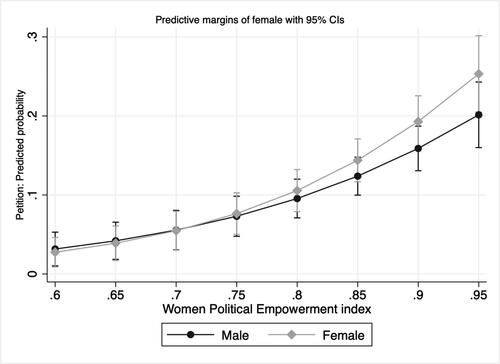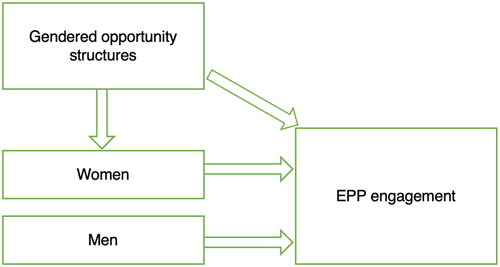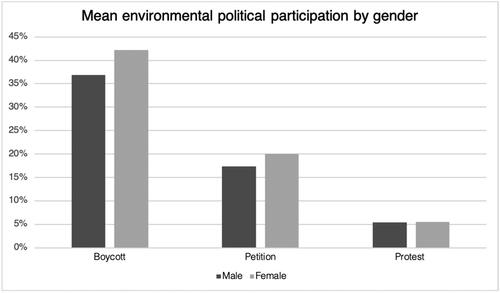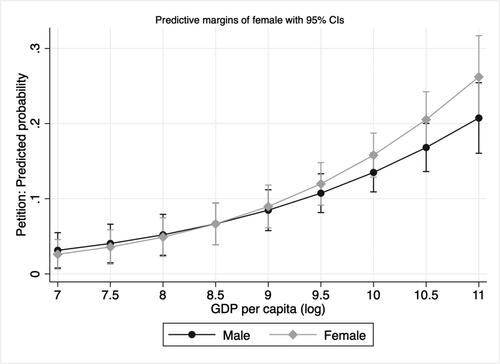Figures & data
Figure 1. Scale of environmental political participation (EPP), ranging from individual and non-confrontational (left) to collective and confrontational (right) forms.

Table 1. Dependent variables.
Table 2. Independent variables.
Table 3. Multilevel mixed-effects logistic regression: Protest.
Table 4. Multilevel mixed-effects logistic regression: Petition.
Table 5. Multilevel mixed-effects logistic regression: Boycott.
Figure 4. Predicted probability of Boycott: Interaction between gender and economic gender equality. Covariates include age and education level.
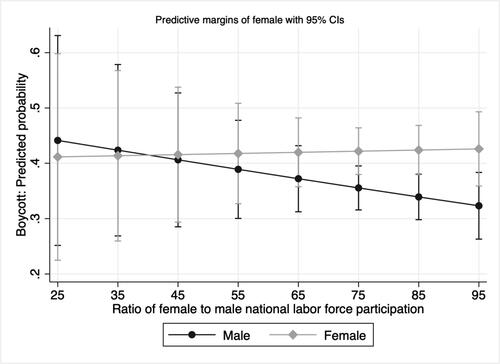
Figure 5. Predicted probability of Boycott: Interaction between gender and political gender equality. Covariates include age and education level
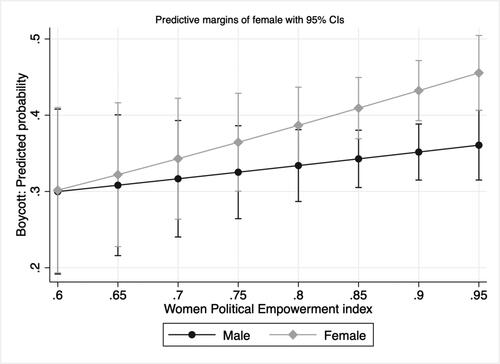
Figure 6. Predicted probability of Boycott: Interaction between gender and GDP. Covariates include age and education level.
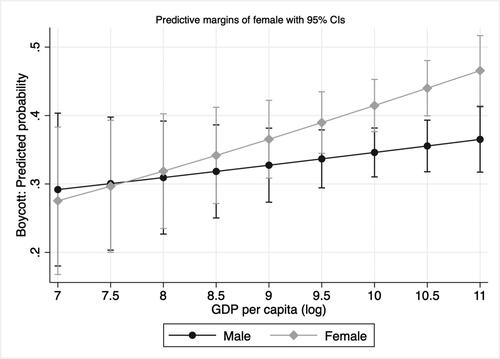
Figure 7. Predicted probability of Petition: Interaction between gender and political gender equality. Covariates include age and education level.
